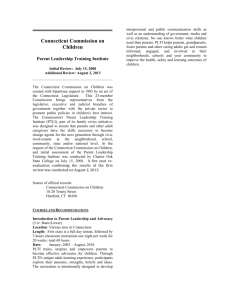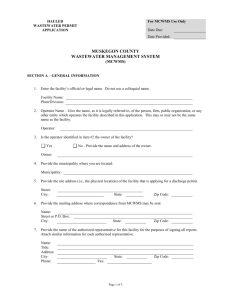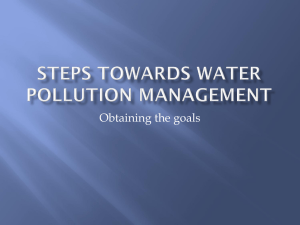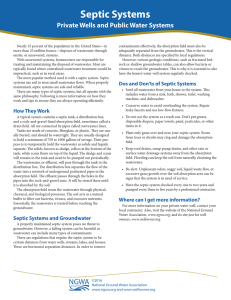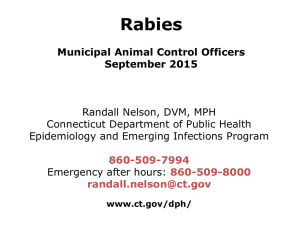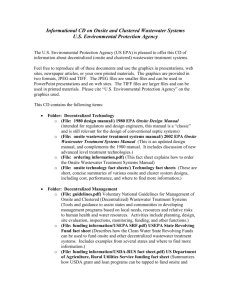Onsite Wastewater Treatment
advertisement
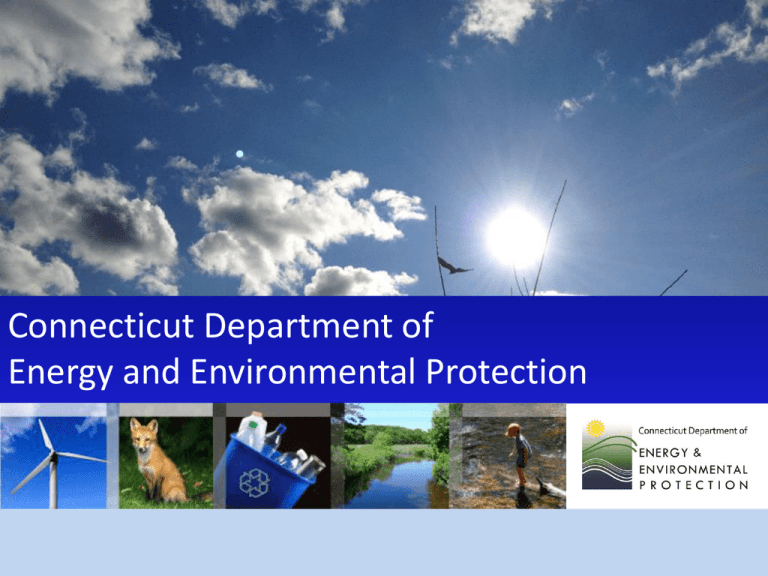
Connecticut Department of Energy and Environmental Protection Onsite Wastewater Treatment: Finding the Funding May 11, 2012 Dennis J. Greci, P.E. Supervising Sanitary Engineer Connecticut Association of Water Pollution Control Authorities Connecticut Department of Energy and Environmental Protection The Basic Issue • In parts of Connecticut, existing septic systems may not be able to treat wastewater effectively, because of – Poor soils – Small lots – Inadequate designs – Improper installation Why is it a problem?? • Each of the preceding deficiencies diminishes the ability of the septic system to perform its function; that is, to renovate wastewater to a quality that can be safely discharged back into the environment • When a number of properties with similar deficiencies exists in a neighborhood, “…a community pollution problem exists, or… can reasonably be anticipated in the future…” (CGS 22a-428) Why can’t we just fix the problems? • If the problem is with the installation (small septic tank, inadequate leaching area) then an onsite repair may be possible. • If the problem is with the site (inadequate land, unsuitable soils, high groundwater) a different approach is necessary. Getting to the Funding: Accessing the Clean Water Fund • In order to obtain funding under the Clean Water Fund, the project must be the most cost-effective solution. • Onsite upgrades have been funded in the past (and in the present) where it’s been determined that such an approach is – technically feasible, – environmentally appropriate, and – economically affordable. But how do we get there ? The Engineering Report • An environmental consultant must prepare an engineering report (also called a Facilities Plan) that accomplishes the following: – Evaluates the severity and extent of the existing or potential pollution problems – Evaluates alternatives to determine their suitability and cost-effectiveness – Recommends an alternative or combination of alternatives – Recommends a schedule for implementing solution Funding the Solution • The municipality needs to approve the engineering report: • • • • WPCA Local Health Dept Planning & Zoning Finance • Get approvals from DEEP and DPH • And finally, get authorization from the citizens • Referndum • RTM What’s eligible? • The Clean Water Fund will provide a grant of 55% for facilities planning (balance is local share) • The Clean Water Fund pays for capital costs through a grant and loan program • System design, including site investigation • Construction • Inspection • The Clean Water Fund provides funding solely to municipalities. Construction must be some form of municipal project, and is governed by the regulations. • The Clean Water Fund will NOT pay for operations and maintenance, or normal costs of local government. Advanced Treatment • At the present time, only DEEP has the authority to approve the installation of advanced treatment technologies. • Delegation of permitting authority to municipalities is still in development. • Operation and maintenance of AT systems will still require a certified operator. • At some point in the future, regulation of small AT system may fall under DPH.
